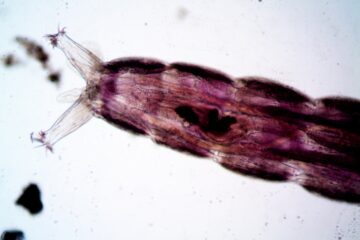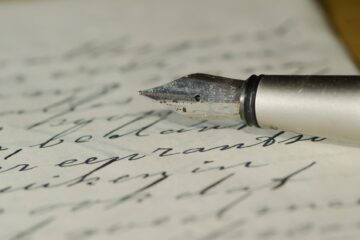![]()
Introduction
A range of scientific disciplines, collectively known as “forensic science”, are concerned with applying their individual scientific fields of competence to topics pertaining to law enforcement, criminal, civil, legal, and judicial proceedings. Forensic scientists generally work in the background of an investigation. They are members of units that conduct the procedures of collecting, analysing, and documenting the evidence found at the crime scene. Forensic scientists are trained and specialised in collecting and analysing forensic evidence using scientific methods and technology. The work of a forensic scientist is quite challenging, requiring a high degree of knowledge and skill. All the work is meticulous and requires an analysis of every minute detail.
Forensic science is a subject of various disciplines and Depending on the area of forensic science being studied, the job description of a forensic scientist may appear to be quite dissimilar and unique. The skills required for a forensic scientist are his or her rational and highly logical bent of mind, conscientiously attentive to details, exceptional written and oratory skills, discretion and high objectivity while dealing with sensitive and secretive content, and extraordinarily competent to work in pressure situations. Regardless of their linked professions, the majority of forensic scientists believe that the inquiry starts at the site. Whether the evidence consists of bloodstains, human remains, hard drives, ledgers, and files, or medical records, finding the truth and guaranteeing accurate evaluation and interpretation of the evidence depend on the investigation, collection, and preservation of the evidence.
A forensic expert is required to acquire data, look for evidence, gather evidence, document evidence, preserve evidence so that it perfectly matches what was obtained from the crime scene, and finally reconstruct the timeline of events. A forensic scientist’s job might seem quite interesting and cool, as depicted in movies and series, but it’s in fact very hectic. Their working hours are not fixed and most of the time they have to work overtime.
Gathering and Identifying Evidence
A piece of evidence must meet certain criteria in order to be considered significant, and forensic scientists are well-versed in how to remove it from the scene without tampering with it or impeding the detectives’ inquiry. A forensic scientist is trained to look for and catch evidence that might not be visible to a normal person. They have a knack for identifying even minute details from the crime scene.
Evidence Documentation
Keeping copious records is essential during the whole criminal investigative process. When fresh investigators are brought in to work on a case, they must be able to review the case files and get all the information they require to become familiar with the investigation. Forensic scientists take careful notes about the evidence they gather from the site, including its location and appearance. This is a crucial step. The collection of evidence won’t be useful until and unless it is documented correctly. Additionally, a lot of photos and videos are also taken for continuous reference. As the crime scene can easily be contaminated or tampered with, first and fresh photos are taken of everything. The memory of a scene or a particular thing may fade, but photos last forever and are extremely helpful.
Handling and Preserving Evidence
Contamination of evidence in forensic science is a major challenge. Mishandling of evidence can hamper the entire justice system. Even a slight cough or a sneeze in the vicinity of an item of evidence may totally damage its credibility and alter the properties of the item. Another main cause of contamination is environmental factors. Wind, sun, rain, snow, and temperature can play a key role in the destruction of the evidence at a crime scene. Slightly higher or lower can change the properties of the forensic evidence. Forensic scientists have to carefully seal and transport the evidence safely. The smallest of changes in the atmosphere can entirely affect the case at hand. Moreover, it is equally necessary to maintain a record of who handled or transported the evidence one after the other.
Analysing Evidence
Analysing the evidence to get a substantial direction out of the piece is the main procedure that gives solid credibility to the evidence. One of today’s most potent sources of forensic evidence is DNA, discovered in biological samples retrieved from the crime scene. When examining this kind of evidence, the forensic expert must evaluate if a suspect’s DNA profile matches the DNA profile obtained from the crime scene sample. As a piece or sample of a bigger object left behind at the scene of the crime, trace evidence is a sort of evidence. Glass shards from a shattered window, a person’s hair, or fabric or carpet fibres are examples of this kind of evidence. The difficult part of this situation is figuring out whether a sample of trace evidence taken from the crime scene matches a sample taken from a suspect. Furthermore, criminal and civil investigations are increasingly relying on digital technologies. Any information received from a device involved in an inquiry might be considered digital evidence.
Sometimes, analysis has to be done of cold cases. Such as in the Sheena Bora case, gathering evidence from a body that was abandoned for over three years as well as from the forest. In order to prevent any errors, the DNA profiles were examined and reviewed three times using different methodologies. DNA determination is ambiguous and difficult when a body is burnt and exposed to the elements. In these situations, anthropology specialists are useful or beneficial in explaining how the DNA sample survived due to location and climatic conditions; otherwise, if the DNA was polluted, the obtained result would be insufficient. The discovered skull was thought to be that of a female between the ages of 22 and 25. The long bone’s (femur) measurement of height ranged from 153 to 160 cm. Sheena and Indrani’s DNA were matched at certain locations. Mikhil Bora’s parentage has also been established by the Forensic Science Laboratory (FSL) through forensic analysis and expert testimony. The exchange of information between the police and the suspect during cross-examination was supported by an anthropological test, which is a requirement for forensic evidence to be admitted in court.
Also, in Anthony Arikswamy Joseph v. State of Maharastra[1], the accused was found guilty of the brutal murder of a young boy, around 10 years old, by strangling him to death after engaging in carnal intercourse with him. The Sessions Judge in Nagpur supported the conviction with scientific evidence, including the boy’s DNA profile and oral testimony. The accused was also fined and given the death penalty.
Sampling
Often, there is too much evidence, which makes sampling problematic. It frequently occurs in huge drug cases where there may be hundreds or thousands of identical exhibits. It may also occur in instances involving bloodstains, fibres, etc. A thorough or repeated analysis with an insufficient sample is dangerous as well. In some circumstances, any sort of analysis might be harmful, leaving no room for reanalysis.
Reporting
A forensic scientist must write up his findings and conclusions after analysing a sample, which another specialist then evaluates and either confirms or challenges.
Conclusion
One of the main purposes of conducting a forensic science investigation is to examine evidence, which plays a very crucial role in determining the guilt of the accused. With the advent of technology and advancement in science, forensic science has taken investigation procedures up a notch, which in turn has guaranteed justice with fewer and fewer lacunas. Any investigation starts with the identification and collection of evidence from the crime scene, primarily. All workers involved, from the initial responders to the information’s final consumers, should be adequately knowledgeable about the forensic process, the scientific disciplines, and the specialised services offered by forensic laboratories. Forensic specialists must have a solid grasp of a variety of scientific concepts in order to analyse or extract the most information from a circumstance. The police and investigating agencies get the specific evidence from forensic scientists that is necessary to establish a particular claim in a court of law. In this sector, strong intuition abilities are necessary. Finding the truth and ensuring proper appraisal and interpretation of the evidence depend on the investigation, collection, and preservation of the evidence, whether it consists of bloodstains, human remains, hard drives, ledgers, and files, or medical records.
A forensic expert is needed to gather information, search for evidence, gather evidence, document evidence, preserve evidence so that it precisely matches what was gathered at the crime scene, and eventually reconstruct the sequence of events. The duties of forensic scientists are not limited. They face various new challenges every day. A forensic scientist must possess the following qualities: a rational and highly logical mindset; meticulous attention to detail; exceptional writing and spoken communication skills; discretion and objectivity while handling delicate and confidential material; and exceptional competence under pressure. Visual evidence is less reliable than forensic evidence. The criminal justice system benefits from forensic science as a source of scientific evidence.
Reference:
[1]Anthony Arikswamy Joseph v. State of Maharashtra, 4 S.C.C. 69 (2014).



0 Comments